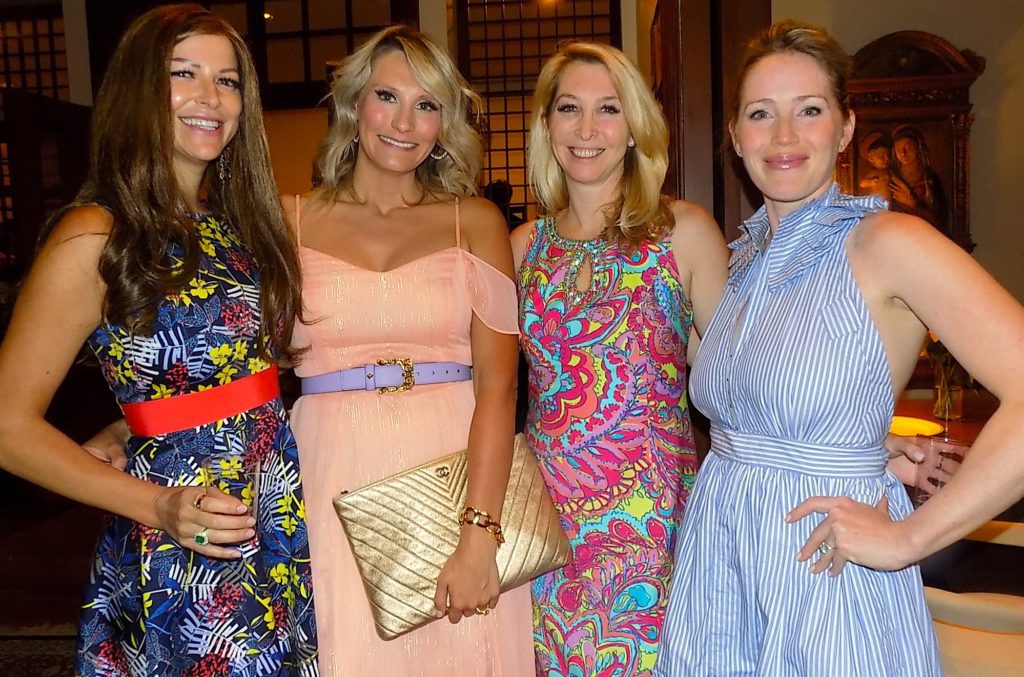Georgetowners Love Their Parks
By • June 20, 2018 0 1433

Washington, D.C., is known as a particularly green capital city, with the National Mall and many memorials surrounded by lawns and gardens. But few people know that D.C. is also a very green and livable city for residents.
“Every resident in Washington, D.C., lives within a quarter mile of a park,” said Mayor Muriel Bowser at Volta Park’s annual summer reception and fundraiser on Friday evening, June 15. “Increasingly, our over 375 parks play an important role in our society, where we live and work in smaller spaces at home. Parks are where we increasingly go to meet people, talk and share our lives.”
With an annual budget of $48.1 million, the District Department of Parks and Recreation has principal authority over the construction and maintenance of city-owned (but not federally owned) parks, and over nearly all public recreation facilities in Washington, D.C.— roughly 900 acres in some 375 parks, 68 recreational facilities, 25 outdoor pools, eight spray parks and 10 indoor pools.
The primary D.C. parks in Georgetown are Volta, Rose, Montrose and Guy Mason, along with Georgetown Waterfront Park, a national park.
In Georgetown, recreation centers offer year-round programs in Rose Park, Volta Park and Guy Mason Park. Outdoor pools are open during the summer at Volta and Guy Mason. Generally, no admission fee is required for District residents to use facilities and pools in D.C. parks.
The Department of Parks and Recreation has a long and complicated history of managing D.C.’s public greens, beginning in 1790. Suffice it to say that it has gone through several incarnations over the centuries. In recent decades, the work of DPR has been enhanced by all-volunteer, nonprofit “Friends of” groups, organized by neighbors of the various parks.
“There are about 35 Friends groups now in the District, but Volta Park’s group, founded by John Richardson, was the first,” said John Stokes, DPR deputy director, at the Volta Park fundraiser. “It became the model for the nation, really, on how parks and recreation departments could partner with neighborhood groups to advocate for each park to meet the special needs of the community.”
Each Friends group enables the park to offer unique events, such as the just completed “Art in the Park,” an installation of 128 large panels of brightly painted artwork in Rose Park during the month of May. Throughout the year, area organizations sponsor picnics, movies, concerts, exercise groups, parades, parties and even farmers markets via the Friends groups and DPR.
DPR maintains the parks and oversees the ambitious programs of construction and improvement that have taken place throughout the District. New playgrounds and sports facilities for various age groups have been built and refurbished recently in Georgetown’s parks, including top-grade tennis courts in Volta and Rose Parks. Plans for Montrose Park’s unique gazebo courts are on the books.
The department also manages youth and adult recreational sports leagues, and provides various outdoor activities such as boating and camping for all ages throughout the year. In summer, these fee-based programs expand to include summer camps for
children, including Little Explorers Camp. The camps use a theme-based curriculum taught by experienced early childhood development staff, with a staff-to-child ratio of 1:4 to 1:5.
Campers between the ages of 3 and 5 participate in daily morning meetings, arts and crafts activities, explorations, DEAR (Drop Everything And Read), games, sports and cooperative play groups for children 18 to 29 months old.
DISTRICT OF COLUMBIA DEPARTMENT OF PARKS AND RECREATION
1250 U St. NW, 2nd floor
Washington, DC 20009
202-673-7647
MISSION
DPR’s mission is to promote health and wellness; conserve the natural environment; and provide universal access to parks and recreation services.
VISION
MOVE — provide all residents affordable, enjoyable opportunities for physical fitness and recreation;
GROW — support personal development among residents through self-enrichment activities; and
BE GREEN — promote practices that connect residents to their local environment.

